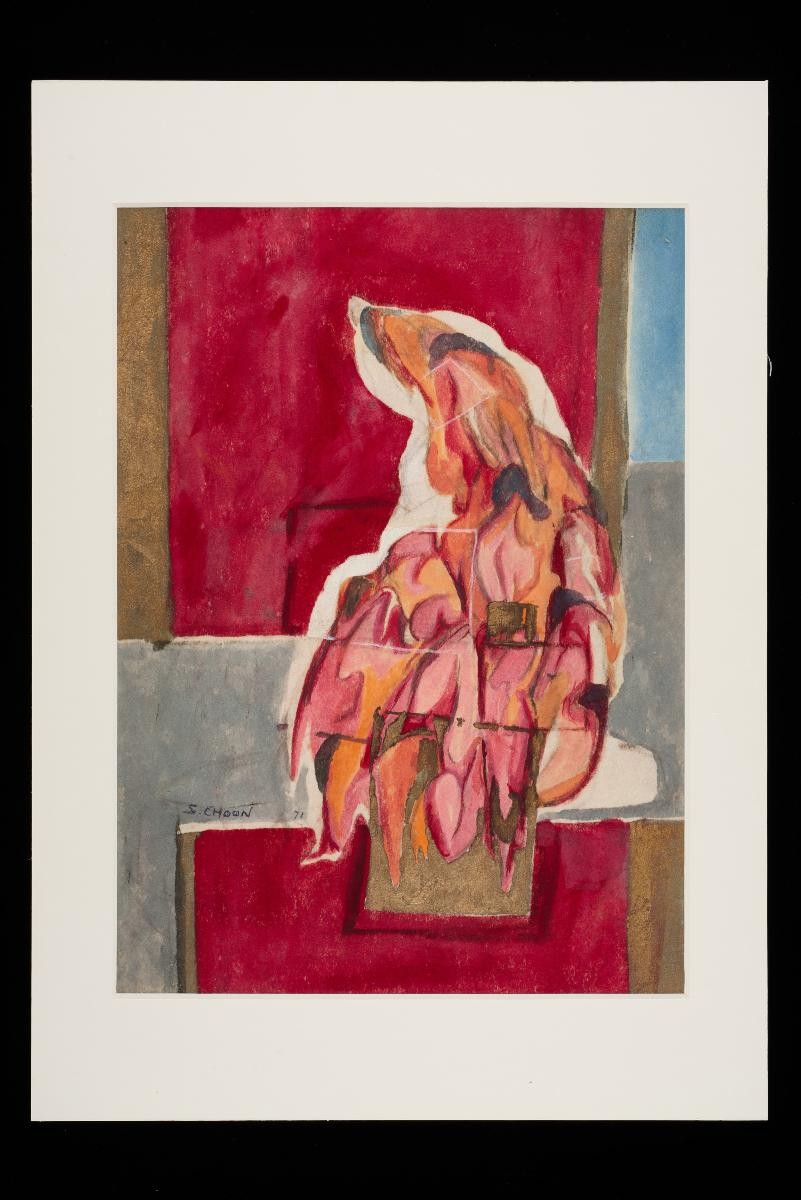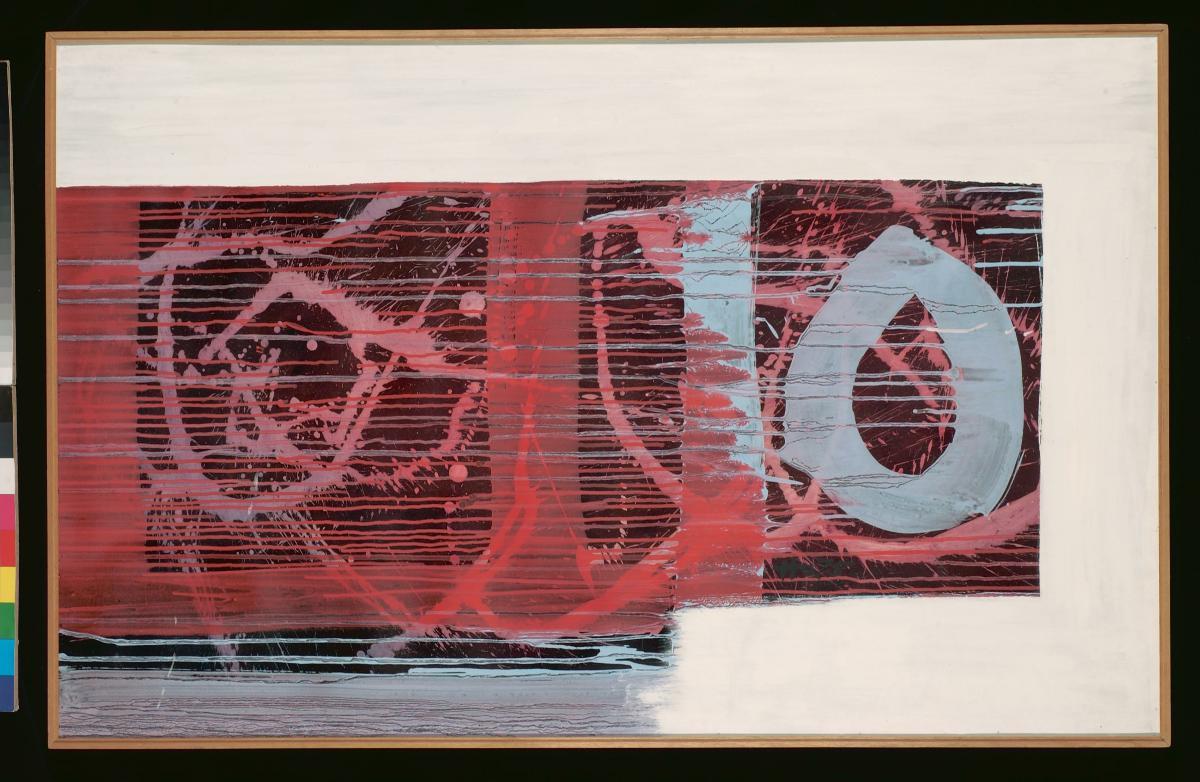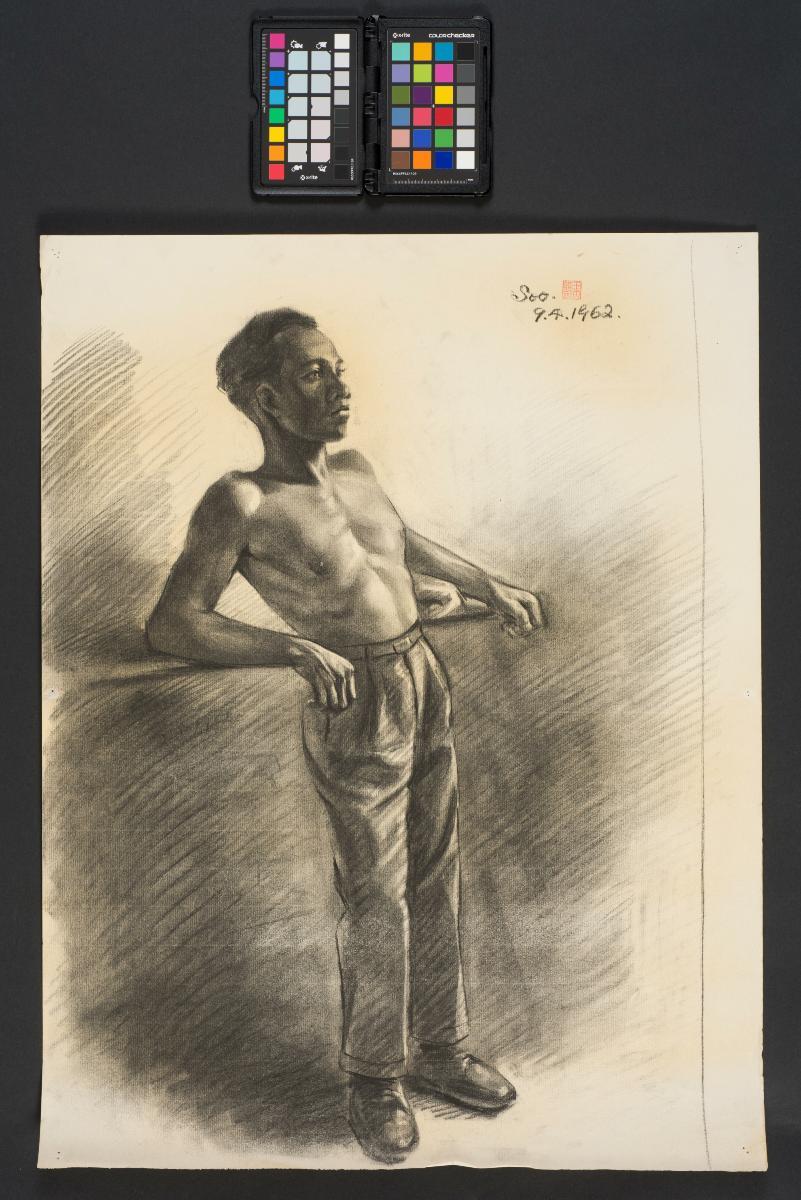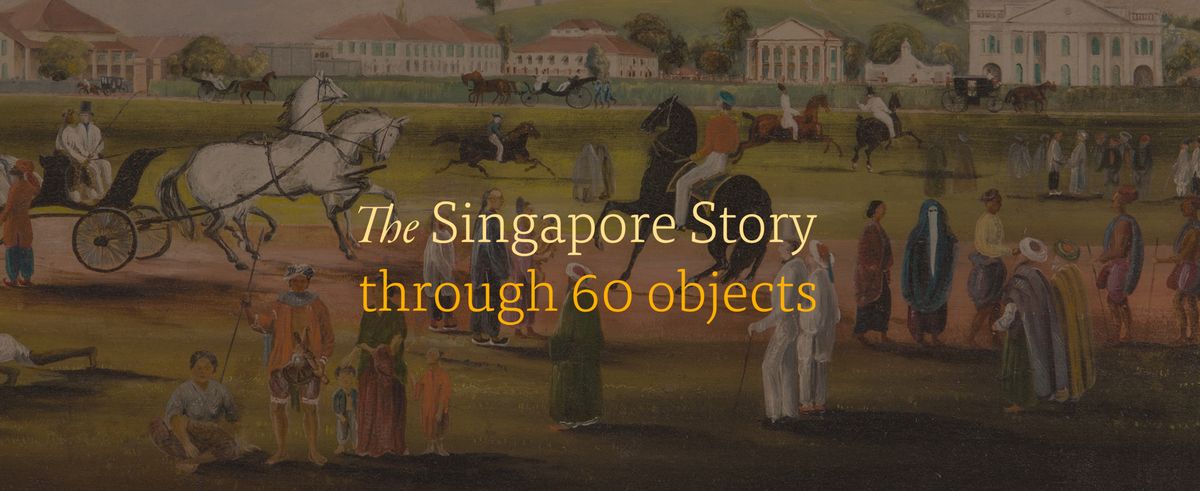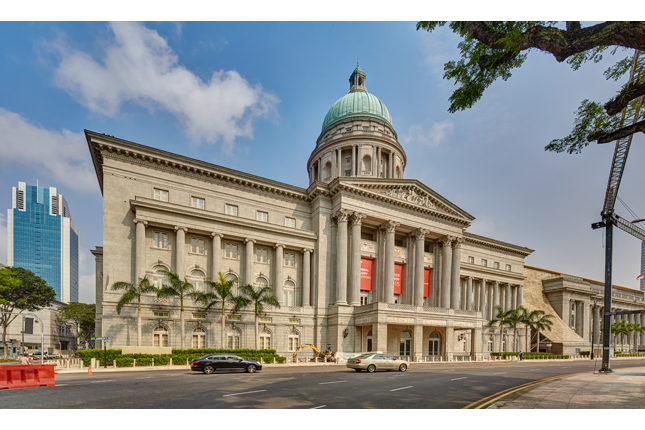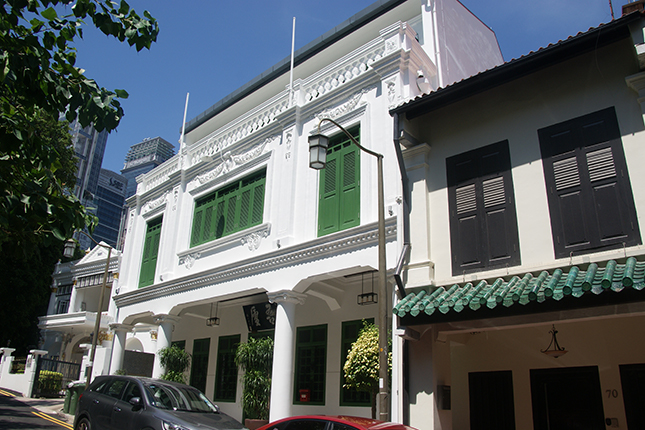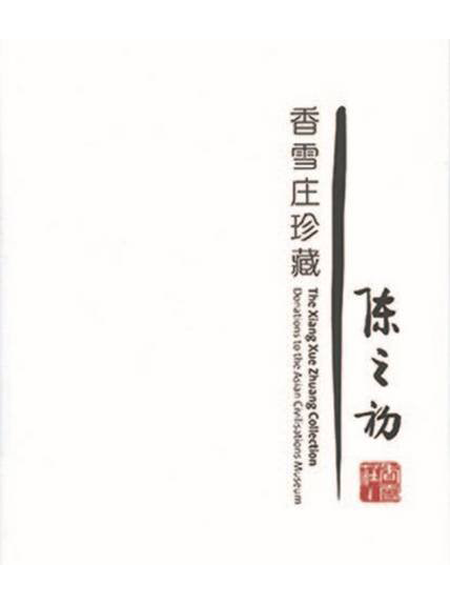Image size: (fabric) 48.7 x 34.6 cm
Born in Kelantan in 1939, the artist Lee Sik Khoon relocated to Singapore and attended the Nanyang Academy of Fine Arts from 1959 to 1962. Lee was associated with the Ten-Men Art Group, a loosely formed group of artists, which devoted themselves to organizing painting expeditions in Southeast Asia, searching for invigorating visual and cultural sources for their work, as well as exhibitions around these trips. Together with others such as Ng Eng Teng, Thomas Yeo, and Tan Teo Kwang, Lee was part of a generation of artists who advanced their art studies in the United Kingdom during the early 1960s. Lee pursued his art studies in graphic art in Hornsey College of Arts and Crafts from 1962 to 1963, and with the encouragement of Ng Eng Teng, pursued painting at Stoke-on-Trent College of Art and Crafts from 1962 to 1967. During his time overseas, Lee kept a close network of friends and teachers from Singapore including his NAFA teacher Cheong Soo Pieng and contemporaries like Tan Teo Kwang and Mak Kum Siew. A distinct and substantial aspect of Lee’s practice revolved around exploring new ways of depicting the human figure. Paintings from the late 1960s were bold exploratory departures from those produced during life drawing sessions in school. In “Figure Movement” (1971), human bodies, flesh and skin, press onto one another and congeal into near indistinguishable form against an abstract chromatic field. It is exemplary of Lee’s aesthetic convictions towards re-envisioning living bodies.




